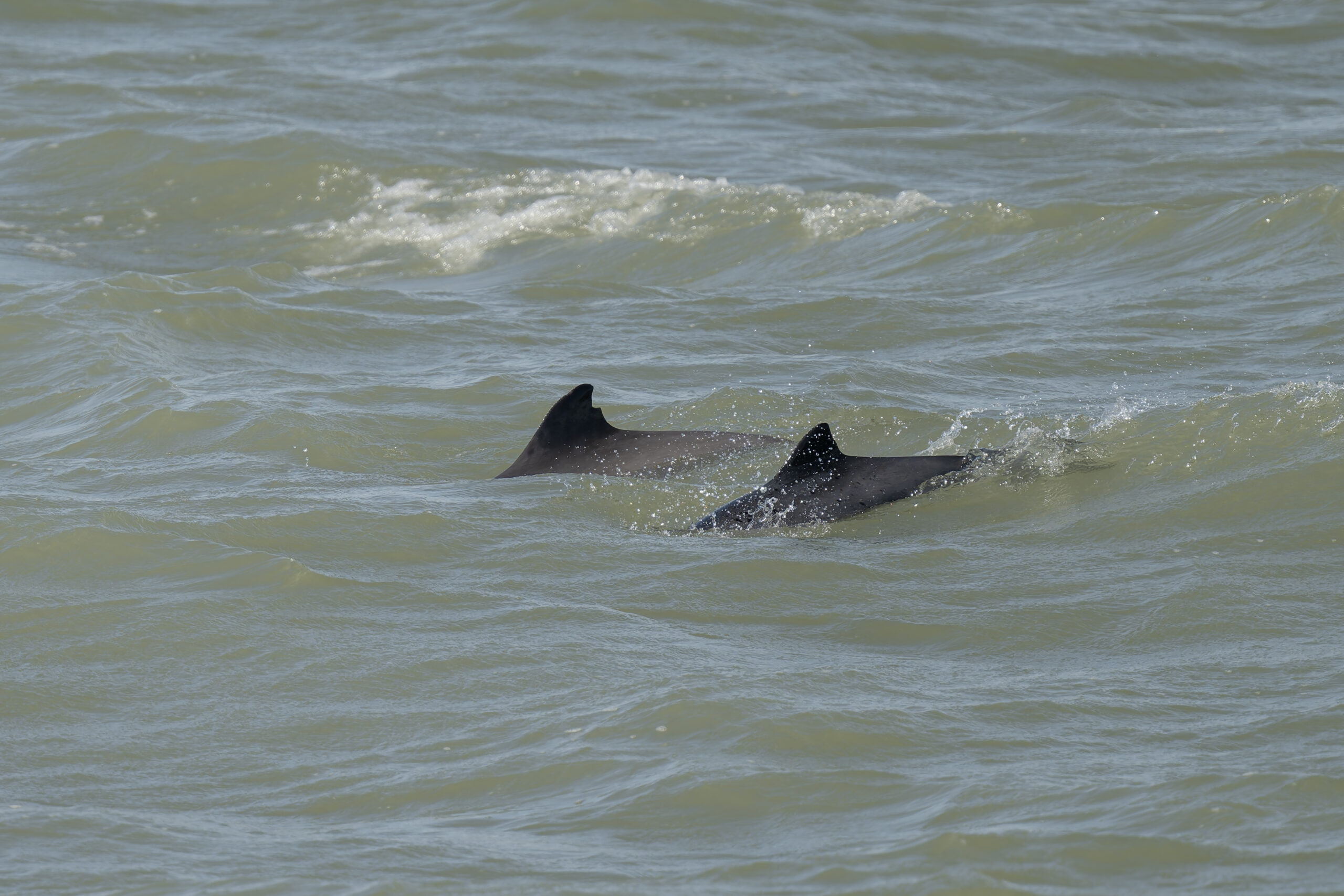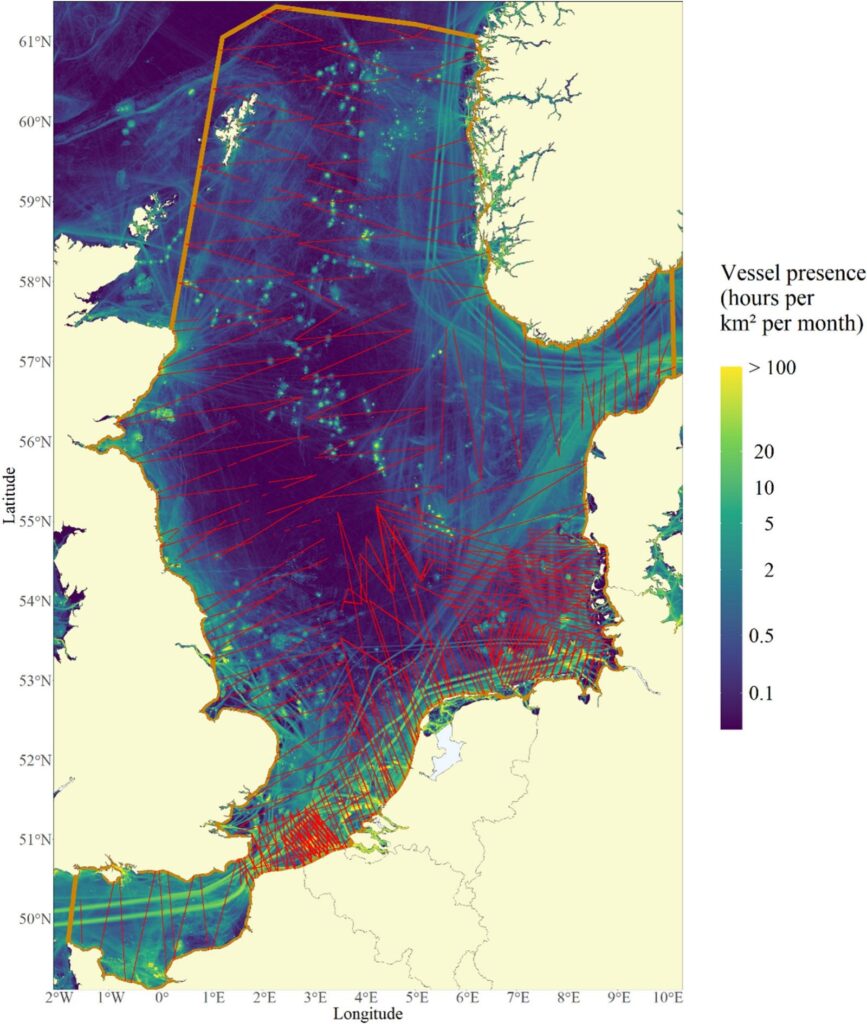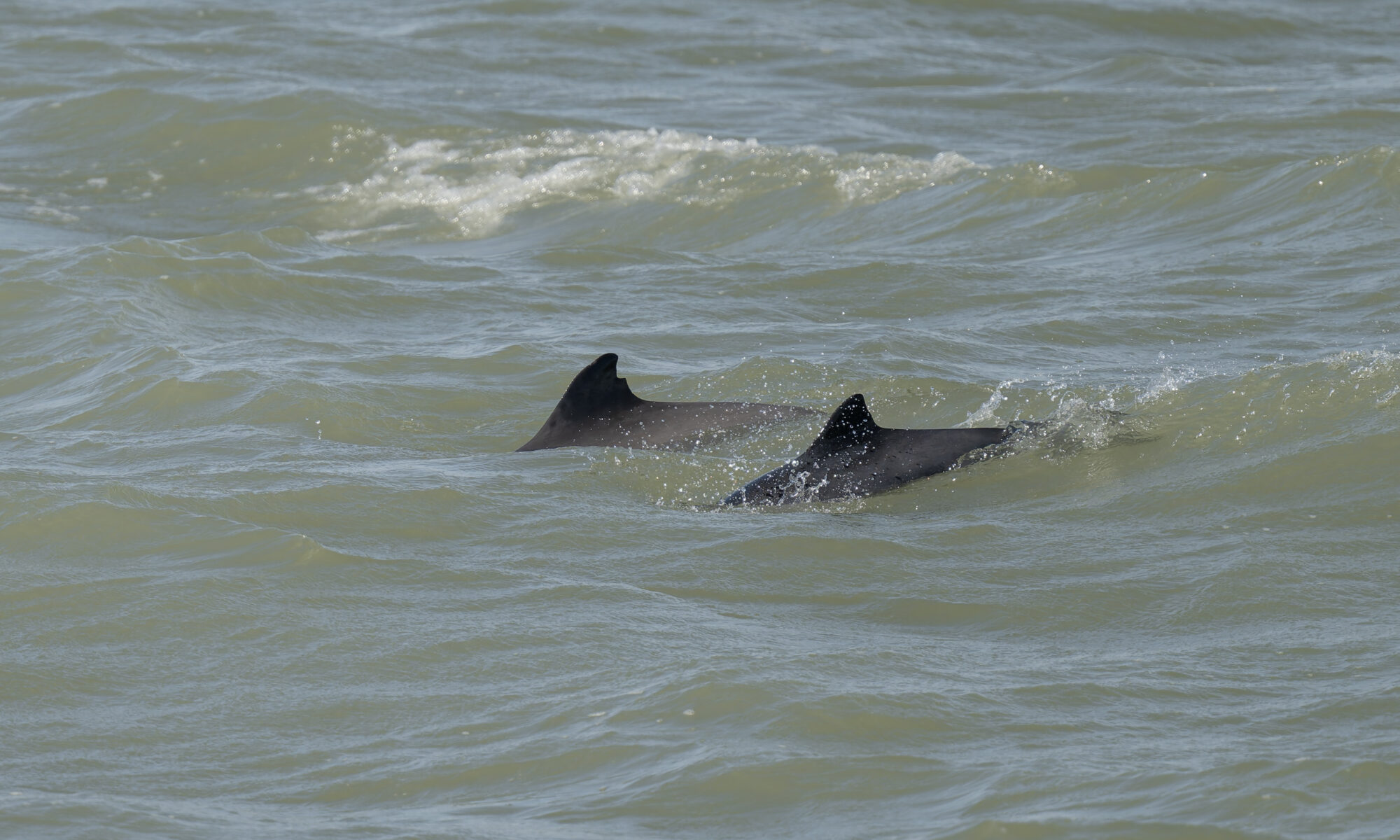The increasing noise of ships crossing the North Sea is changing the marine environment. A new large-scale study analyzing aerial observations of marine mammals and shipping data has shown that harbour porpoises avoid areas with heavy shipping traffic. This avoidance could disrupt their feeding patterns and social behavior.

Researchers combined aerial observations of marine mammals with data from the Automatic Identification System (AIS) of vessels to map the impact of shipping on the distribution of harbour porpoises (Phocoena phocoena). Shipping intensity was used as a measure of noise intensity. Underwater noise can disturb harbour porpoises and make their environment less suitable as a habitat.
Between 2015 and 2022, researchers in Belgium and neighboring countries recorded 6,511 groups of harbour porpoises. The study compared different variables, such as ship noise, ship proximity, and frequency of ship passages, to determine which factor best explained the presence, or absence, of harbour porpoises in certain areas. The international research team was led by Rémi Pigeault of the Institute for Terrestrial and Aquatic Wildlife Research (ITAW) at the University of Veterinary Medicine Hannover (Germany), with contributions from Jan Haelters of the Institute for Natural Sciences.
The results show a correlation between high ship density and the reduced presence of harbour porpoises. The further from shipping routes, the less porpoises were affected but the impact remained noticeable up to 9 kilometers away. The study, published in Marine Pollution Bulletin in November 2024, confirms the increasing impact of underwater noise on marine ecosystems.
The impact of maritime traffic
The North Sea is one of the busiest maritime regions in the world, and shipping traffic is expected to increase further due to the expansion of offshore industries such as wind farms and oil and gas installations. Shipping generates underwater noise that travels over long distances, affecting marine life.
Harbour porpoises rely on echolocation to hunt, navigate, and communicate. Their extremely sensitive hearing makes them vulnerable to noise pollution. Previous studies have shown that loud ship noises cause porpoises to exhibit avoidance behaviors, such as rapid diving, increased swimming effort and interrupted feeding.
The results indicated that models incorporating real ship movements predicted porpoise distribution more accurately than those based solely on theoretical noise levels. “The ‘forced’ displacement of porpoises due to shipping can limit their ability to search for food”, explains Jan Haelters.
Implications for conservation and policy
The study highlights the need to consider the impact of shipping on marine life and to take measures where possible. As Rémi Pigeault states: “With increasing ship traffic and the expansion of offshore industries, it is essential to implement measures that minimize noise pollution and protect important porpoise habitats before the disturbance becomes irreversible.”
One potential solution is the designation of marine protected areas where shipping activities are restricted to safeguard vulnerable species. Another approach involves developing technologies that produce less underwater noise pollution. Seasonal restrictions on shipping or other noise-intensive human activities in crucial feeding and breeding areas for porpoises could also be an effective measure.
This research provides valuable insights that can contribute to sustainable marine planning, ensuring that harbour porpoises and other marine species in the North Sea continue to thrive.


